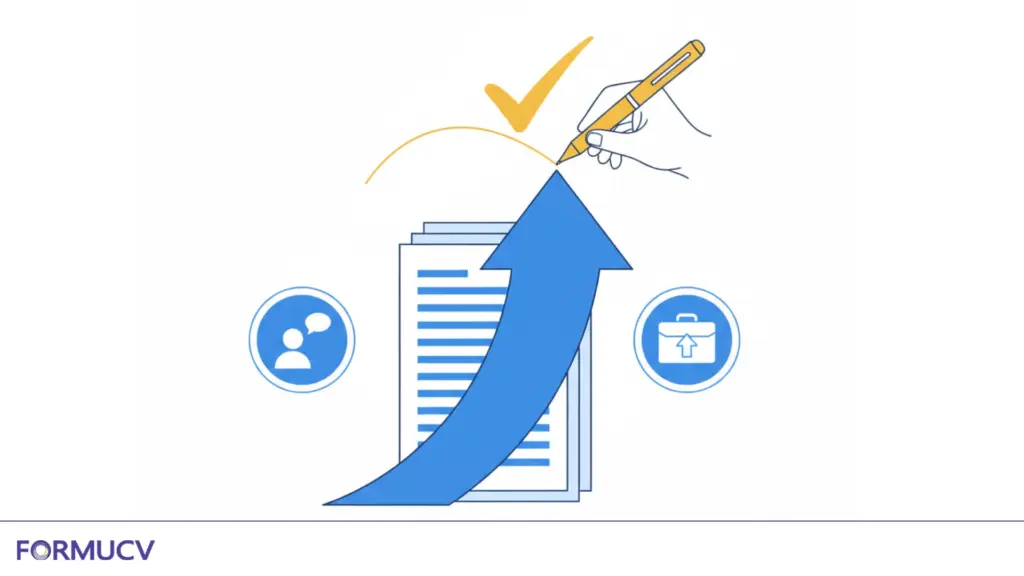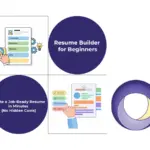
10 Professional Resume Writing Tips That Actually Get You Hired
The first time I wrote a resume, I was so proud of it until a friend in HR glanced at it and said, “It looks like a novel, not a resume.” I laughed, but she was right. My three-page masterpiece had everything except what employers actually wanted to see. Most people go through this. You sit in front of a blank document, trying to summarise years of effort into a single page that makes you sound impressive but not fake. It’s stressful, especially when you know your resume might be read for less than 10 seconds before someone decides your fate. Then let’s talk about Professional Resume Writing Tips…
Table Of Content
- 1. Start with Clarity, Not Creativity: This is essential for professional resume writing tips.
- 2. Write for Humans, Scan for Machines
- 3. Customise Every Resume to the Job
- 4. Start With a Short Lead, Not a Paragraph
- 5. Use Numbers Like Proof, Not Decoration
- 6. Don’t Hide Your Gaps, Frame Them
- 7. Skills Sections Are Underrated, Use Them Wisely
- 8. Keep It to One Page (Usual): Yes
- 9. Make It Readable on Any Screen
- 10. Get Feedback Before Sending
- Who Benefits Most from These Tips
- Final Thoughts
So, let’s make that short moment count. These professional resume writing tips, which we are now discussing in FormuCV, come from what employers, hiring managers, and genuine job seekers say actually works, not theory or templates from 2008.
1. Start with Clarity, Not Creativity: This is essential for professional resume writing tips.
The biggest mistake beginners make is trying to be clever. Funky fonts, colourful boxes, even emojis—one of those gets you hired. Employers aren’t grading your design taste; they’re scanning for information.

A clean, structured layout wins every time. Use simple fonts (think Arial, Calibri, or Helvetica). Bold your section headers. Leave white space. That’s not “boring”, it’s professional.
If formatting makes you nervous, use a resume builder or modern template. These tools take care of spacing and structure so you can focus on content. They also ensure you don’t have to sign up or pay at the last minute.
2. Write for Humans, Scan for Machines
Every resume goes through two audiences: the Applicant Tracking System (ATS) and the human behind it.
ATS software looks for keywords, job titles, skills, and tools, while humans look for context, achievements, outcomes, and personality.
The trick is blending both. For instance, instead of writing:
Responsible for managing marketing campaigns
Try:
Managed digital campaigns for three brands, increasing engagement by 42%
See the difference? You’ve kept the keyword (“campaigns”) but added measurable impact. That’s gold for both bots and humans.
3. Customise Every Resume to the Job
You know how some people use the same resume for 20 jobs and wonder why they never get called back? Yeah, don’t do that.
Employers can tell when your resume feels “copy-pasted.” Each role deserves a slightly different version. Swap in keywords from the job post, adjust the order of your bullet points, and highlight the experiences that best match what they need.
Yes, it takes longer, but you’re far more likely to land interviews.
4. Start With a Short Lead, Not a Paragraph
The top section of your resume, the first few lines, is prime real estate. Don’t waste it on cliché statements like “Motivated professional seeking growth opportunities.” Everyone writes that.
Instead, lead with a professional summary that reads like a confident handshake.
Something like:
Marketing graduate skilled in content strategy and analytics, willing to bring data-driven storytelling to a growing brand.
Short, personal, focused. That’s what catches eyes.
5. Use Numbers Like Proof, Not Decoration
This is important in Professional Resume Writing Tips; Numbers tell stories faster than adjectives. “Strong communicator” is nice, but “Presented weekly reports to a 10-person leadership team” says more.
For every bullet point you write, ask yourself: Can I measure this? Even rough estimates, such as percentages, time saved, revenue earned, and clients served, work.
For example:
Improved client retention by 15% through personalised onboarding calls
This turns your work into results. Employers love results.
6. Don’t Hide Your Gaps, Frame Them
Career gaps happen. Layoffs, caregiving, health breaks, it’s life. The key is honesty and framing.

Instead of ignoring a year off, you can write:
2022–2023: Career pause for personal development and online certification in UX Design
That’s professional and transparent. It also tells them you kept growing.
7. Skills Sections Are Underrated, Use Them Wisely
The skills section isn’t filler. It’s where ATS systems check your relevance.
Don’t list everything you’ve ever heard of. Choose 8–12 key skills directly related to the job: tools (e.g., Excel, Figma), languages, frameworks, or soft skills that truly define how you work.
Tip: If switching careers, add a “Relevant Coursework” or “Projects” section. It shows effort and practical proof that you’re levelling up.
8. Keep It to One Page (Usual): Yes
Yes, even if you’ve been working for years. Employers skim resumes. One page is ideal unless you’re in academia or a senior executive position.
If it feels impossible, trim outdated roles, combine early experiences, and drop irrelevant details like high school awards or your GPA from 10 years ago.
Remember: the goal isn’t to tell your life story, it’s to earn a conversation.
9. Make It Readable on Any Screen
Most employers now review resumes on phones. That means your elegant two-column layout might collapse awkwardly on mobile.
Before you send anything, open it on your phone. Check spacing, alignment, and font size. Save it as a PDF so nothing shifts.
This is another example of how using a simple online resume builder can help: it automatically optimises for desktop and mobile viewing.
10. Get Feedback Before Sending
You’d be surprised how many errors slip past your own eyes. I once spelled my email address wrong on a resume I’d sent to five companies. True story.
Always get a second pair of eyes. Ask a friend, mentor, or even use a grammar-checking tool, but don’t entirely rely on AI to fix tone or intent. It can miss subtle human cues.
If you’re applying internationally, consider having someone local review your phrasing. Sometimes, what sounds confident in one culture is arrogant in another.
Who Benefits Most from These Tips
These tips help you translate academic work into professional impact if you’re a recent graduate. If you’re a career changer, they help reframe transferable skills without downplaying your experience. And if you’re re-entering the workforce, they help you rebuild credibility with honesty and focus.

No matter your background, your resume is your story condensed. Done right, it doesn’t just open doors; it reminds you what you’re capable of.
Final Thoughts
Writing a professional resume isn’t about perfection; it’s about direction. You’re not trying to please every employer, just the right one.
Take your time. Trim what doesn’t matter. Highlight what it does. If design or formatting slows you down, use a trusted resume builder or clean template to simplify the process. Just make sure it stays truly free of hidden costs.
The goal isn’t just to get noticed. It’s to feel proud when you hit “submit.”
We actively promote more professional resume writing tips on our Formucv LinkedIn account. So follow us to learn more.
